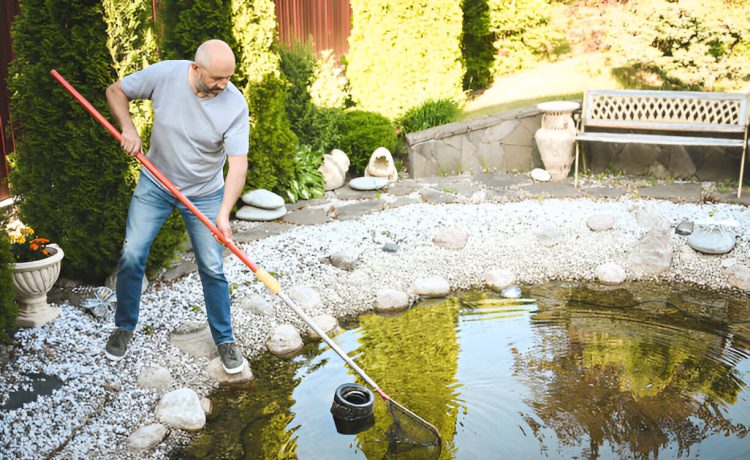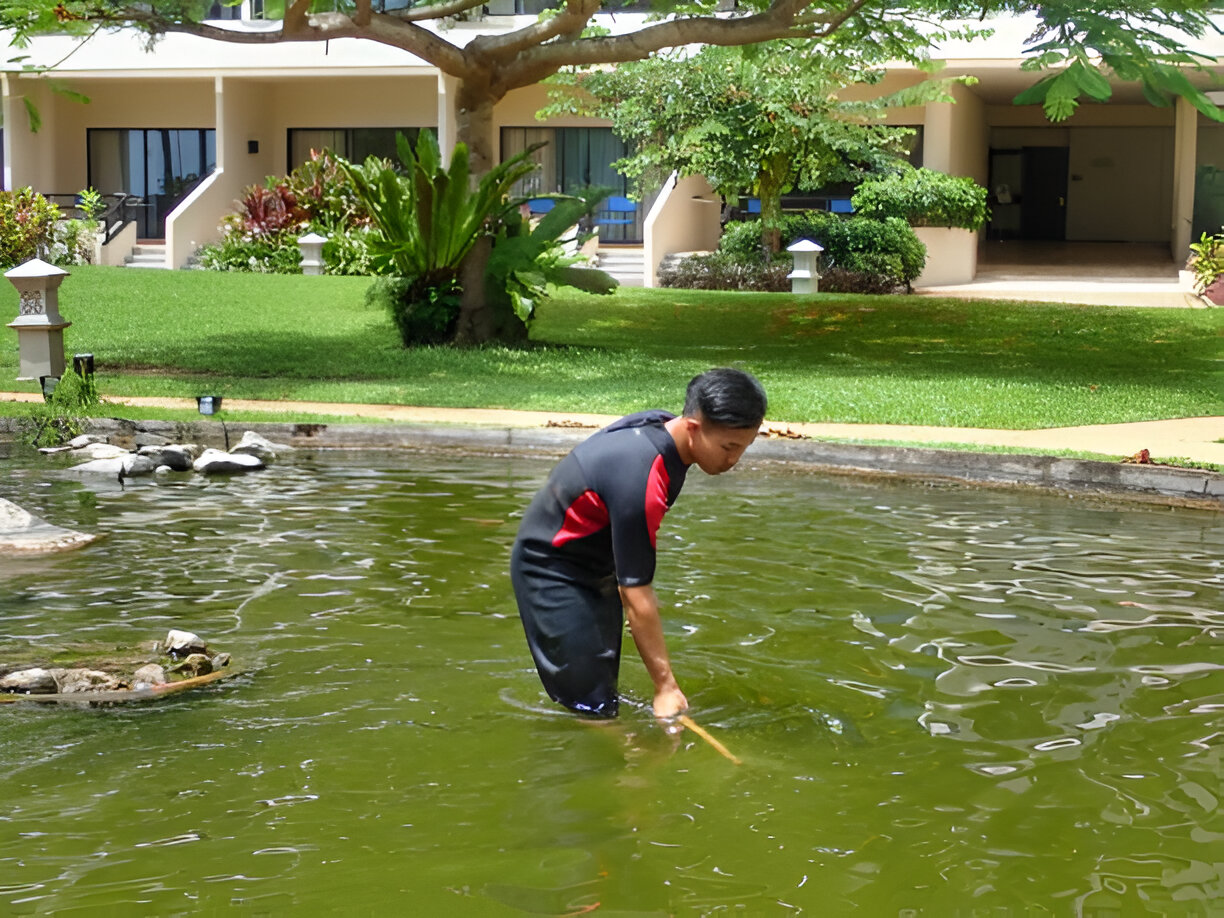Keeping a healthy fishpond requires more than just good intentions—it demands knowledge of what not to introduce to your aquatic ecosystem.
While quality equipment like Burtons Aquatics drum filters can help maintain water clarity, even the best filtration will not compensate for harmful additives or poor practices.
Meet That Pond Guy
Local pond specialist That Pond Guy has rescued countless fishponds from disaster. “About 40% of my emergency calls come from well-meaning owners who accidentally poisoned their ponds,” he shares. His hard-earned wisdom helps others avoid common pitfalls.
Toxic Substances to Ban Immediately
1. Household Cleaners
- Why dangerous: Even trace amounts of bleach, disinfectants, or detergents destroy gill function
- Real consequence: Kills fish within hours
- Better solution: Use pond-specific algaecides at recommended doses.
2. Pressure Washers
- Hidden risk: Strips beneficial biofilm from liner and rocks
- Aftermath: Destabilizes ecosystem for months
- Gentler alternative: Soft brush and pond water rinse.
Misguided “Quick Fixes” That Backfire
1. Complete Water Changes
- The myth: “Fresh water equals healthy pond”
- The reality: Removes all beneficial bacteria
- Smarter approach: Partial changes (max 30%) with DE chlorinator.
2. Random Plant Additions
- Common error: Adding nursery plants with fertilizer pellets
- Result: Algae blooms from nutrient spikes
- Proper prep: Soak new plants for 7-10 days, changing water daily.
Fishkeeping Faux Pas
1. Overfeeding Frenzies
- Visible clue: Uneaten food rotting on pond floor
- Chain reaction: Ammonia spikes → oxygen crashes → fish gasping
- Golden rule: Feed only what fish consume in 5 minutes.
2. Winter Feeding
- Cold truth: Fish metabolism stops below 50°F (10°C)
- Silent killer: Decaying food becomes algae fertilizer
- Seasonal shift: Switch to wheatgerm food in fall, then stop entirely.
Equipment Missteps
1. Filter Sterilization
- Well-intentioned mistake: Scrubbing filters until “clean”
- Unseen cost: Eliminates your biological filtration
- Pro method: Rinse media in pond water (not tap).
2. Total Pump Shutdowns
- Winter temptation: “Saving electricity” by turning systems off
- Danger: Stagnant water grows toxic gases
- Year-round rule: Keep water moving, even at reduced flow.
That Pond Guy’s Cautionary Tale
Early in his career, That Pond Guy learned a painful lesson when paint droplets accidentally entered a client’s pond. “Watching those goldfish perish taught me that pond water is like air to fish—contaminate it, and you are essentially poisoning their atmosphere,” he reflects. This experience now informs his strict “nothing foreign” policy for all maintained ponds.
When Disaster Strikes
If you have already added a harmful substance:
- Immediately transfer fish to clean, dechlorinated water
- Test water parameters (ammonia, nitrites, pH)
- Add activated carbon to filtration
- Consult a pond professional before reintroducing fish.
Prevention Beats Emergency Care
- Quarantine new plants/fish for 2-4 weeks
- Label all pond tools to prevent chemical cross-contamination
- Educate family/housekeepers about pond sensitivities.
That Pond Guy sums it up: “Your pond is not a swimming pool—it is a delicate, living system. Treat it with the same care you would give a prized aquarium, just on a larger scale.”
Accidentally added something questionable? Do not panic—reach out to a pond specialist immediately for damage control advice tailored to your specific situation.



















